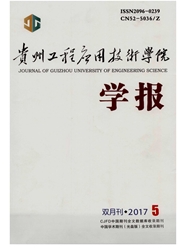

 中文摘要:
中文摘要:
由义项为“用十二属相记生年”的动词“属”所构成的句式,主要有:1.“NP1([+人])+属+NP2(十二生肖名词)”,此类典型、常用,可客观表示属相,说明出生年份及年龄,也是拉近交际距离的常用策略;少数情况可表示比喻,是双关句。2.“NP1([+人])+是+属+NP2(十二生肖名词)+的”,多数情况表示比喻;少数情况仍表示属相,是强调句,把属相当作原因和理由来强调和突出。因此有时是歧义结构。3.“NP1+是+属+NP2(非十二生肖名词)+的”,是比喻。换个角度考察发现:用“属”来陈述自然属相,常用句式“NP1+属+NP2”;用“属”来表示比喻,常用句式“NP1+是+属+NP2+的”。
 英文摘要:
英文摘要:
There are mainly sentence patterns constructed by verb Shu with meaning of animal signs for birth year, NP1([+People])+Shu+NP2(nouns for animal signs), a typical and common-use type expressing animal sign and indicating birth year and age for a general strategy in decreasing communicative difference, with sel-dom expression of metaphor and double meaning, NP1([+People])+Be+Shu+NP2(nouns for animal signs)+of, a sentence for emphasis indicating metaphor with seldom expression of animal signs as cause and reason imply-ing different meanings,and NP1([+ People]) + Be + Shu+ NP2(without nouns for animal signs) + of, indicating the metaphor. Investigating from another angle, we can find that the common-use sentence pattern Np1+Shu=Np2 for expressing natural animal signs and the common-use sentence Np1+Be+Shu+Np2+of for expressing meta-phor with use of Shu.
 同期刊论文项目
同期刊论文项目
 同项目期刊论文
同项目期刊论文
 期刊信息
期刊信息
